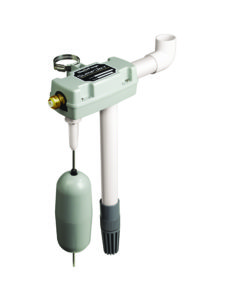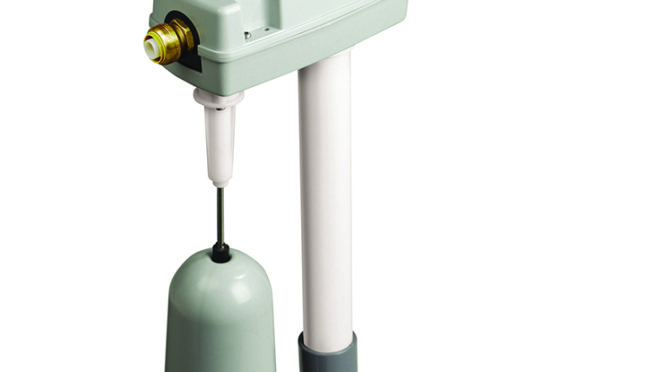 Whether you’re a homeowner or a landlord, if your home has a basement in an area with flooding, it needs a sump pump. There are a number of good AC models available, such as the Zoeller M267. But you don’t just need a sump pump, unless you’re lucky enough to live somewhere where the power never goes out and your sump pump never stops working. For the rest of us, a backup sump pump is just as important as the main pump itself.
Whether you’re a homeowner or a landlord, if your home has a basement in an area with flooding, it needs a sump pump. There are a number of good AC models available, such as the Zoeller M267. But you don’t just need a sump pump, unless you’re lucky enough to live somewhere where the power never goes out and your sump pump never stops working. For the rest of us, a backup sump pump is just as important as the main pump itself.
Many people choose a DC backup sump pump, and there are a number of models that work well, such as the Wayne WSM3300. However, if you don’t want to deal with maintaining a deep cycle battery or if you have a high water table or frequent flooding, you might be better served with a backup sump pump that doesn’t need electricity at all. A water-based sump pump gets rid of battery drama; as long as you have water pressure from your local municipality, you’ll be able to keep your basement dry–in theory, at least.
Today we’re going to take a closer look at one of the best budget water-based sump pumps on the market, the Liberty Pumps SJ10 SumpJet Water Powered Back-Up Pump. It’s a solid and popular pump among families and investors interested in basement flood prevention. Our full review is below, but if you’re wondering whether we think it’s worth it, we do, and you can buy it here.
Key Features of the Liberty Pumps SJ10 SumpJet (60 Second Summary)
 The Liberty Pumps SJ10 is a water-powered backup sump pump. The pump does not require electricity or batteries, but runs through water pressure from a municipal water supply. It requires a constant, uninterrupted water source to work. Its maximum water flow rate is 1,188 gallons per hour (19.8 gallons per minute) and it comes with a 3 year warranty from Liberty Pumps. It is 21.6 inches tall, 5.1 inches wide, and 14.5 inches deep, and weighs 6 pounds.
The Liberty Pumps SJ10 is a water-powered backup sump pump. The pump does not require electricity or batteries, but runs through water pressure from a municipal water supply. It requires a constant, uninterrupted water source to work. Its maximum water flow rate is 1,188 gallons per hour (19.8 gallons per minute) and it comes with a 3 year warranty from Liberty Pumps. It is 21.6 inches tall, 5.1 inches wide, and 14.5 inches deep, and weighs 6 pounds.
The SJ10 features a 1-1/2″ discharge and includes a 3/4″ NPT water inlet connection to receive water from a municipal water system. It can accept an inlet supply pressure between 20 PSI and 100 PSI, and will remove 2 gallons of sump water per gallon received. The full technical specifications are here.
Because it is a water-powered sump pump, its pumping performance will increase and decrease with the water pressure at the inlet as well as with the pumping head. Sump pump water removal at 20 PSI tops out at 11 GPM (660 GPH) with a max head of 13 feet. At 40 PSI, the max pressure is 16 GPM (960 GPH) with a max head of 25 feet. At 60 PSI, the max pressure is 19.8 GPM (1,188 GPH) with a max head of 39 feet.
How Does the Liberty Pumps SJ10 SumpJet Compare to the Wayne WSM3300 and ESP25?
Compared to the Wayne WSM3300, the biggest differences between it and the SJ10 SumpJet involve functionality. The WSM3300 requires a deep cycle battery to work as well as an AC supply to charge the battery from time to time while the SJ10 never requires batteries or an AC connection. On the other hand, the SJ10 does require a connection to a working municipal water supply, while the WSM3300 does not. The WSM3300 is also a smart sump pump and includes a range of self-monitoring and communicative abilities. The SJ10 does not, although there is an enhanced version available with smart features–the SJ10A-Eye.
Beyond the power supplies and communicative differences, there are also differences in pumping efficiency to be aware of. The WSM3300 can move water much more quickly than the SJ10 (3,300 GPH vs 1,188 GPH), but the max pumping height of the SJ10 can be up to 2x as large depending on main water pressure (39 feet vs 20 feet).
Compared to the ESP25, the battery-vs-municipal water power source is the biggest difference, as the ESP25 doesn’t include smart features. The pumping speed differences are the same.
In general, the biggest difference to keep in mind between a water-based pump and a battery-based pump is that a water-based pump offers the security of not relying on the electricity to come back within a few days the way a battery-based pump does. To put it simply, if you lose power for more than around 3-4 days, your battery-based pump will be as dead as your AC-based pump unless you have a charged deep cycle battery ready to swap into the pump, because the main deep cycle battery keeping the pump going will only run for a few days of intermittent use before dying. This isn’t an issue with a water-based pump; as long as you have city water pressure, you’ll be able to keep your basement dry. This alone makes it worth considering over a battery-based pump if you live somewhere with frequent power outages or if you leave your home unoccupied (due to work travel or vacations) for days or weeks at a time.
Our Short and Long Term Experiences Installing and Using the Liberty Pumps SJ10 SumpJet
Installing the SJ10 was a snap; it comes fully assembled and the manual is rather easy to follow. Instead of using PVC and copper water lines, you might want to consider SharkBite push-to-connect fittings as well as PEX tubing, since they make the job faster. If you’re okay soldering, though, you’ll save a lot of money by soldering copper fittings; it depends on whether you want to save money or time. The basic procedure is to connect the horizontal inlet to your municipal water supply (which powers the pump), the vertical inlet to your sump basin inlet tubing (which brings in the water that fills your sump basin), and the horizontal outlet to your sump ejection line (which carries water out of your basement and home).
When properly installed, you should be able to get a decade out of one of these pumps without much trouble; they have fewer moving parts than battery-based pumps (no external float switches to worry about), which makes them more likely to stand up to the long haul.
Troubleshooting and Installation Tips to Get Your Liberty Pumps SJ10 SumpJet Working Sooner
As noted above, while you can install the SJ10 with copper, PVC, and some soldering, you’ll have a much easier time if you spend some money on some SharkBite fittings and PEX tubing. You’ll need enough feet of PEX 3/4″ flexible line or copper tubing to bring water from your main line to the pump, keeping in mind that if you have a smaller size line (e.g., 1/2″), you’ll need a smaller PEX or copper tubing. Similarly, you’ll need a way to remove water, which is where you’ll either need 1-1/2″ PVC tubing or an equivalent discharge or garden hose.
The manual recommends a 3/4″ water line so enough water pressure will keep the pump going, but you’ll be fine with 1/2″ lines as long as you’ve got enough pressure. You want to make sure that you don’t have more than 100 PSI coming from your main water line or you can burst gaskets in the pump and create huge flooding issues. On the other end, you’ll want at least 20 PSI or there won’t be enough to drive the pump.You don’t need a check valve since one is already included, but if you’re interested in switching it out, we can recommend the Brady check valve, as it works well and is quiet.
Liberty Pumps SJ10 SumpJet Pros, Cons, and Value Comparison
It’s hard to find any negatives about the SJ10 for its price. If you need a backup sump pump–and if you don’t have one, you need one–and don’t want to use a battery-powered backup system, this is one of the best budget water-based backup sump pumps currently on the market.
No, it doesn’t have smart features, although there is an upgraded equivalent you can buy to get such features (the SJ10A-Eye), but it will do a good job keeping your basement from flooding if your AC sump pump loses power, can’t keep up with rain or water levels, or simply stops working, and it will continue to work without ever needing any form of electricity. As long as you have water pressure, you’ll have a sump pump to make sure your basement stays dry. We recommend it heartily.
You can buy the Liberty Pumps SJ10 here on Amazon. You can buy the Liberty Pumps SJ10A-Eye here. You can buy the Wayne WSM3300 here on Amazon. You can buy PEX tubing here and SharkBite connectors here. You can buy a silent check valve here.
If you find our work at PumpThatSump helpful, you can support our relentless reviewing of every sump pump on the market by shopping via our Amazon link for whatever you need to make your house a home. Despite being self-employed, we promise not to spend it all on health insurance.
